One of the powerful voices of Indian poetry, Nabina Das writes poems that straddle life and dreams. They rise out of her multilingual experience, the variegated tradition of India, injustices around us, a passion for life, and her quest for a fairer world. Reading her poetry is like experiencing the world around you in its myriad avatars. If her verses drench you in passion, the next moment it slaps you into a wakefulness, it can even pinch you hard in sarcasm. She can “Imagine a world where battle tanks are sabzi mandi” and elegantly lead us to “Imagine a world of only thinking tanks”[i], such is her vision. The polyglot within her makes occasional appearances in poems like ‘When rain in many tongues fell’[ii] – a mellifluous ode to the Indian rains. In an increasingly polarised world, her verses are spacious enough to hold both Krishna and Allah. What touches me most about Nabina Das is a unique empathy and generosity that can be found both in her verses as well as in her attitude towards younger poets. In her recently edited anthology Witness: The Red river Book of Poetry of Dissent she has chronicled the contemporary times, bringing together 250 poets within one volume; no mean feat to achieve!
Here, Nabina Das shares her views about poetry, publishing, her alma mater JNU, Sanskarnama, and much more for the column Poetspeak in Saarangabooks.com.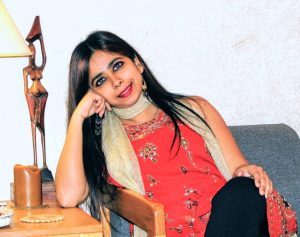
N.S. What does poetry mean to you? Why is it important?
Nabina: Poetry never came to me formally. It was all in the tales of women and their exploits, of ghosts and plants, of peasants and rulers, in songs and folklore, and stories from people all around me that poetry took roots in me. What it means to me, therefore, is, life in elemental forms, people’s tales. The grammar was not the first discipline, the language of poetry was. Poetry means freedom, resistance, free spirit. Also, understanding grief and loss, understanding silence, and choice. Is it important, poetry? I know tyrants also claim to write poetry, and humourless people swear they understand poetry. Those on the pedestal posing as deities, self-appointed guardians, gatekeepers, and betrayers spew poetry. Poetry is important it seems. For me, I’d like to keep it along to make me an empathetic being, if not a poet outright.
N.S. How much did your years in JNU contribute to your development as a poet?
Nabina: My alma mater JNU gave me the ability to debate and dissent. Not just a degree. We were all poets and pursuers in that environment. We saw ourselves as poets because we had solidarity in our goals, ideas, and ideologies. Our pursuit of happiness was to see we could maintain that attitude. Often we were misunderstood — as we still are now — as JNU-ites. Especially, the establishment always seems to be threatened by our rhymes and images. I wouldn’t think of myself to be anyone special arising out of JNU. Instead, I would credit the collective nurturing spirit of JNU that made us who we are.
N.S. You have written in multiple genres. Do you see yourself primarily as a poet or as a creative writer of multiple genres?
Nabina: Imagination doesn’t have compartments. For all genres of writing, imagination is essential. Calling myself a poet in an increasingly cold and cruel world especially for women, is an affirmative action for me because I do believe there is poetry inherently in all kinds of writing one may want to pursue. I write fiction, essays, commentaries, etc. I’ve done a miniscule bit of graphic designing. All of it is a part of my attempt to address the structural faultlines. “A creative writer of multiple genres” is a label I’d reserve for those with stars and stripes, none of which I aspire for!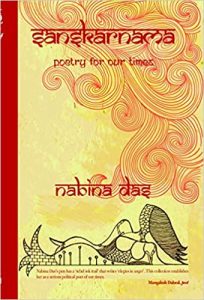
N.S. Why did you write Sanskarnama?
Nabina: It’s more like Sanskarnama wrote me! Poetry for our times, as the tagline goes, might explain why this book appeared. Time was the teacher and instigator, and protest and love as poetry had to come about before time ran out. As Szymborska wrote, “this course is only offered once”.
N.S. What is your opinion regarding Indian English poetry in India today?
Nabina: Indian poetry in English, as I like calling it, has vast scopes. I say that even as a person who grew up writing primarily in Bengali and Assamese. In terms of the Englishes we speak from all corners of this land, from the caste/class formations, from gender(fluid) locations, from feminist and ally-ship positions, from diverse language intervention and translation backgrounds, this poetry should rage forward and create its own alluvial plain. Social media and digital access have made it possible for hundreds of poets and writers to find democratic forums and present their work. So, there’s really no looking back. My happiness lies mainly in the fact that younger poets are more and more able to bypass the old guards, and old frameworks. What I’m really concerned about is the lack of a strong critical tradition in reading or assessing poetry written in English. Criticism and critical assessment to address Indian poetry in English do not form a wholesome part of our poetics so to say. What goes about mostly are patronizing book reviews, bitter squabbles, out of context parallels, and ahistoric positing of notions or ideas. The purpose of a strong critical tradition in literature is also to help younger, aspiring writers find a solid grounding in honing their skills and acquiring knowledge. The latter can only take recourse to a money-spinning workshop culture that seems geared towards scuttling any critical ideas generation.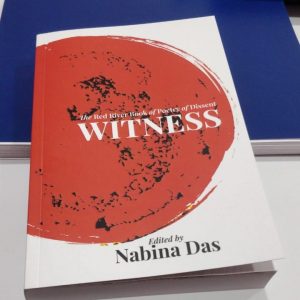
N.S. Let me finish with one last but very important question – What are your views regarding the poetry publishing scenario in India?
Nabina: Let me give a tiny background first. When I started out to publish my writing in English in the new millennium – earlier I published mostly in Assamese and Bengali magazines or newspapers with occasional English poems or stories – I went in for newly emerging webzines side by side print journals such as Indian Literature (Sahitya Akademi), some US and UK journals, and friends who made proud chapbook collections and little magazines. Gradually, there was a surge in web-based magazines and even a lot of well-known print magazines began having web portals for poets and writers to be readily published. The digital bridging continued to make it possible for a lot of us to forego the anxiety of reams of paper submission, mailing out with postage and attaching an envelope for reply from the editors, and the long and often futile wait. Besides, the web magazine or zines were fairly democratic as they evolved. Those of us with an Internet connection could easily get across their work for consideration. Cut to the present, as I look around, I find new writers, as well as some of my contemporaries, to be very well connected across the cyberspace.
One must remember, there still is a huge majority in India who do not have computer connectivity, and yet they write, are avid readers. Digital blockade and social marginalization are harsh realities for them. I still feel encouraged that digital platforms have opened up in large numbers. Print magazines display web portals of poetry and prose quite regularly. Editors are happy that diverse work – negligible in pre-digital times – is coming to their platter from all corners of the world. Social media has made the boundaries more fluid. In India, all of the above has seen a large flow of creative work from the uninitiated and the established alike. Off the cuff I can think of publications such as Vayavya, The Alipore Post, Bengaluru Review, The Bombay Literary Magazine, The Sunflower Collective, Café Dissenssus, Muse India, Poetry at Sangam, Scroll, The Wire, Firstpost, Antiserious, Borderless Journal, Joao Roque Literary Journal, Out of Print, Mithila Review, The Bombay Review, The Punch Magazine, The Indian Quarterly, Himal Southasian, Lakeview International Journal of Literature and Arts, etc. These are a few journals/websites that welcome eclectic and diverse work, and there are many. The poetry scene in India according to me — contrary to the belief some gatekeepers maintain that too much flotsam and jetsam clog the elite space — is akin to a blossoming field, deep in consonance with the aspirations of the upcoming poets and writers.
Of course there would be several who’d seriously need to polish their writing skills to keep blooming, and some of them would also momentarily feel dejected at rejections, but this field is a level playing one for anyone who look up to poetry and form a democratic creative community. The publishing scene is a vibrant one. With collaboration and independent presses looking out for talents, I look forward to reading good poetry in the coming times.
[i] https://scroll.in/article/915964/imagine-a-world-where-tanks-can-be-libraries-as-john-lennon-might-have-two-poems-by-nabina-das
[ii] https://cafedissensus.com/2017/06/15/nabina-das-three-poems/
*




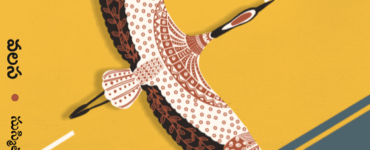

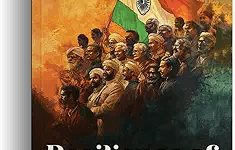
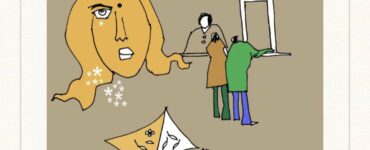

Add comment